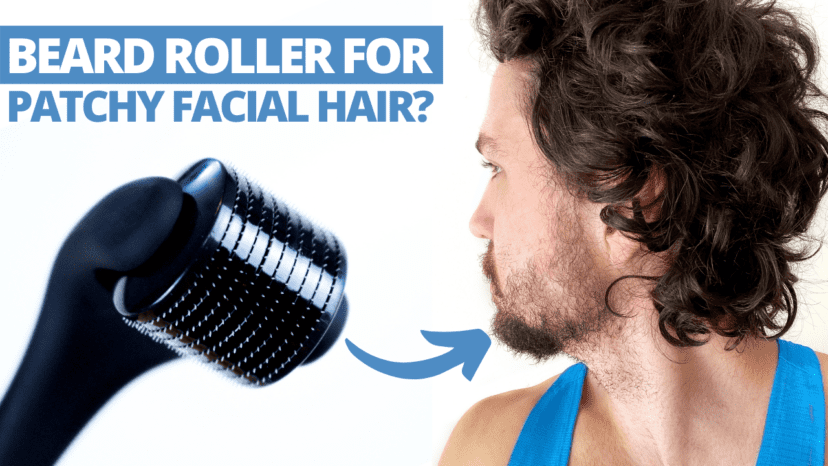If you’ve been searching for methods on how to fix a patchy beard, you’ve no doubt come across the idea of using a beard roller to make it happen...
HOWEVER, the question still remains, does derma rolling work for beard growth OR is it a big marketing ploy for businesses to make a tonne of cash off of our insecurities around not being able to grow adequate facial hair?
In this post we’re going to take a deep dive into the science behind beard rollers & why they are said to be an effective solution for upping our beard game.
Then, after looking at the cold hard facts, our founder Thomas In Action is going to be taking part in a 6 month experiment using a beardroller on his patchy facial hair to put all the theory into practice.
Over this 6 month experiment we’ll be adding Thomas’ results to the bottom of this post so you can follow along with the journey and Thomas will also be posting updates on his YouTube channel.
6 Month Beard Roller Results
The Science Behind Beard Rollers & Microneedling
In science, the real term for “beard rolling” is actually known as microneedling or collagen induction therapy.
This type therapy is performed by using a device, like a beard roller (aka a derma roller) with hundreds of tiny needles to create multiple superficial injury sites in the surface layers of the skin which activates the skin’s natural healing process.
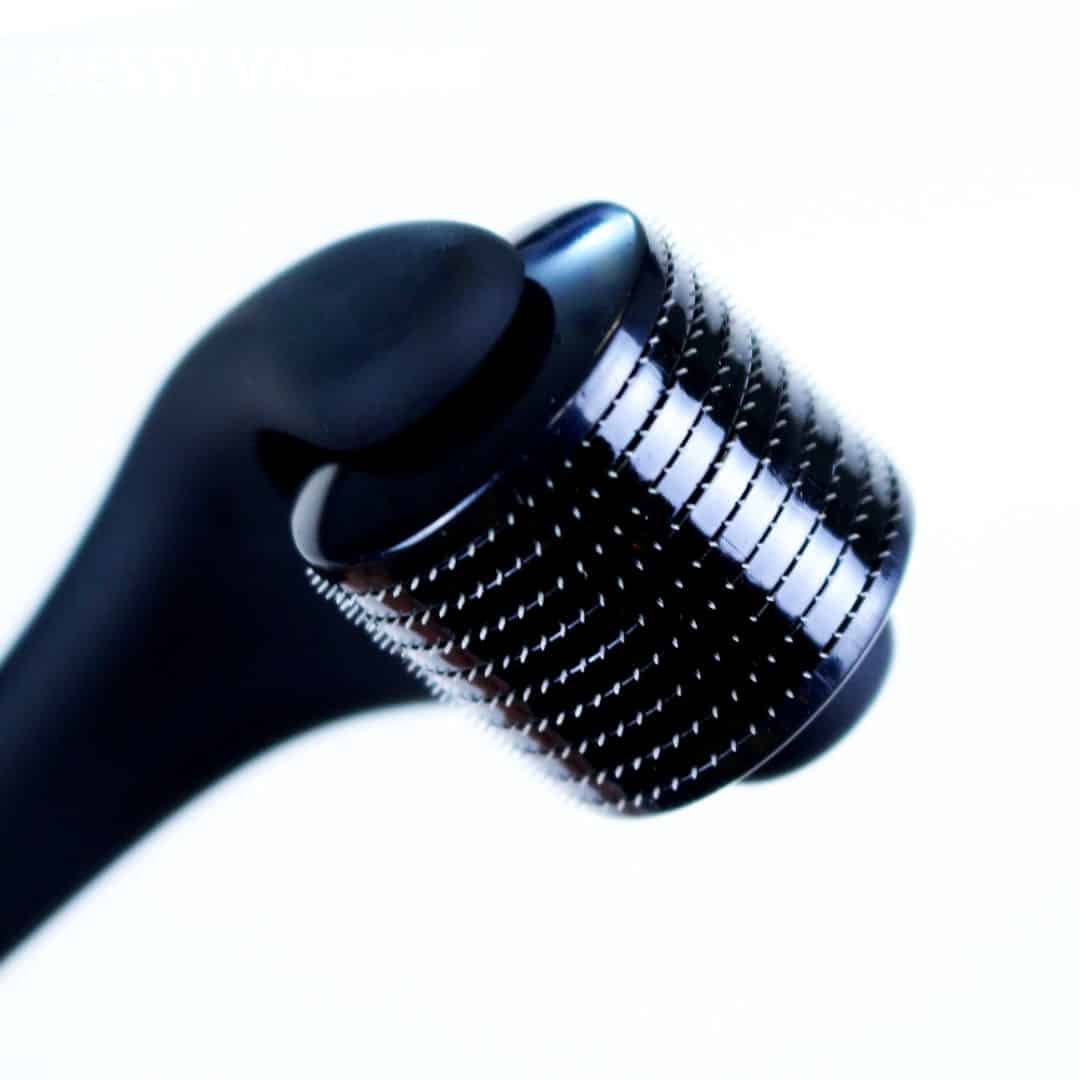
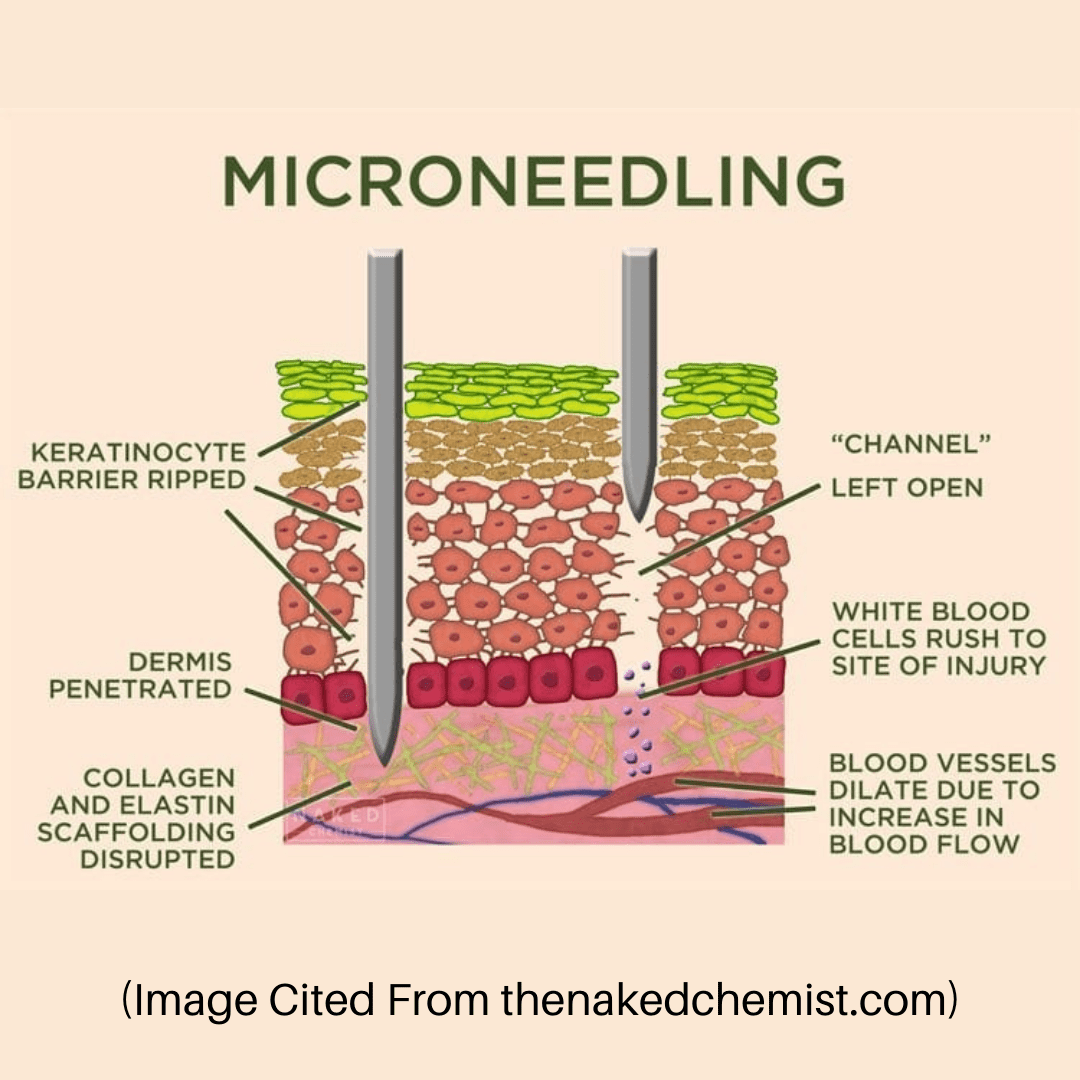
When the skin’s natural healing process is activated, nutrient rich blood is sent to the area leading to the forced production of new collagen in the skin making it appear more radiant and healthy. This is why microneedling is so popular amongst women looking for anti aging solutions as the results of this forced collagen production can lead to:
- Reduced wrinkles & fine lines.
- Improved firmness.
- Improved clarity & tone in the skin.
This modality has also been proven as an effective treatment for things like:
- Reducing irregular pigmentation and patchiness.
- Reducing stretch marks visibly.
- Healing acne scars.
- Minimising enlarged pores.
So it’s clear to see why using microneedling to induce collagen production alone can be beneficial on multiple accounts.
However, new collagen production isn’t the only event occurring under the hood when these little injury sites are created in the skin.
An in depth study from the International Journal of Trichology shows that the process of microneedling also stimulates the activation of several growth factors needed for new hair production.
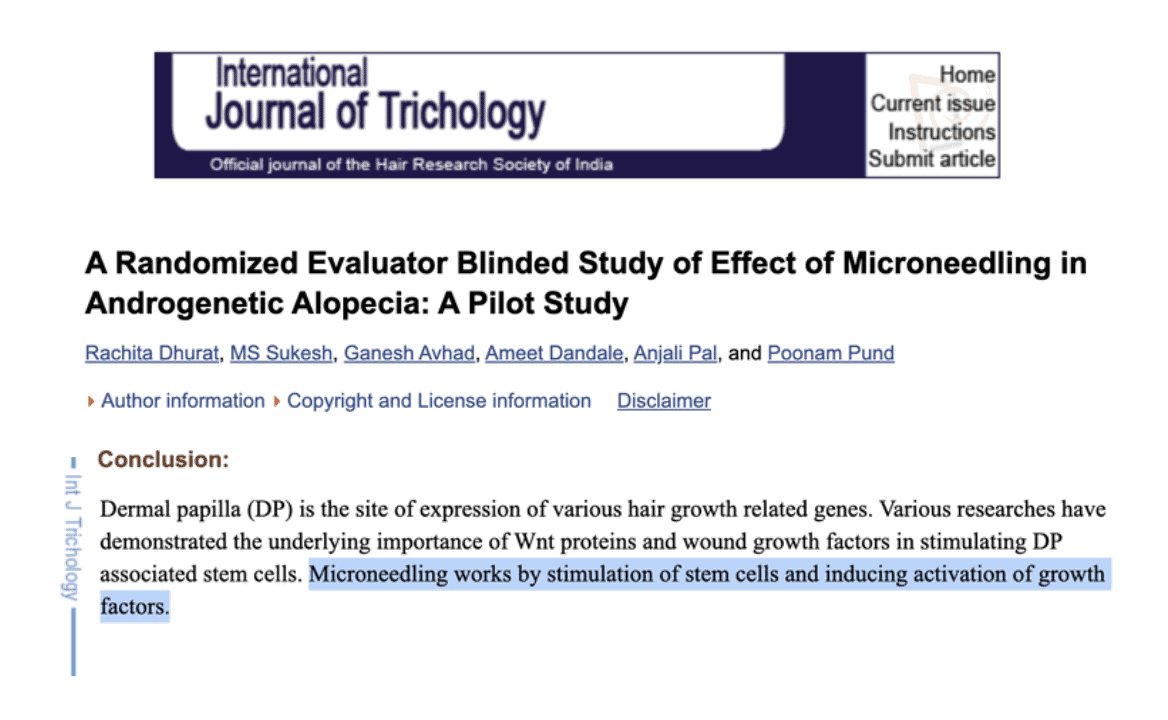
In the most simple terms, the nutrient rich blood that is sent to the injury site after treatment allowing the body to create more collagen also produces more of the proteins needed for strong healthy hair as well as stimulating the cells that are responsible for regulating the growth cycle.
The study was performed on 100 men experiencing mild to moderate male pattern baldness and they were then randomly split into two groups.
The experiment was carried out on the vertex of the head (the crown area) and 1 group were given 5% minoxidil to use twice daily with the addition of weekly microneedling treatment for 12 weeks and the other group were only given the 5% minoxidil to use for the same amount of time.
If you’re unfamiliar with minoxidil (AKARogaine) and are interested in learning more about it’s effectiveness on hair loss, you can read this study from the Journal of Drug Design, Development & Therapy.
After both groups completed their 12 weeks of treatment, the results pretty much spoke for themselves.
82% of the men in the group that were given the minoxidil & the derma roller reported more than 50% improvement and only 4.5% of the minoxidil only group reported a mild difference.

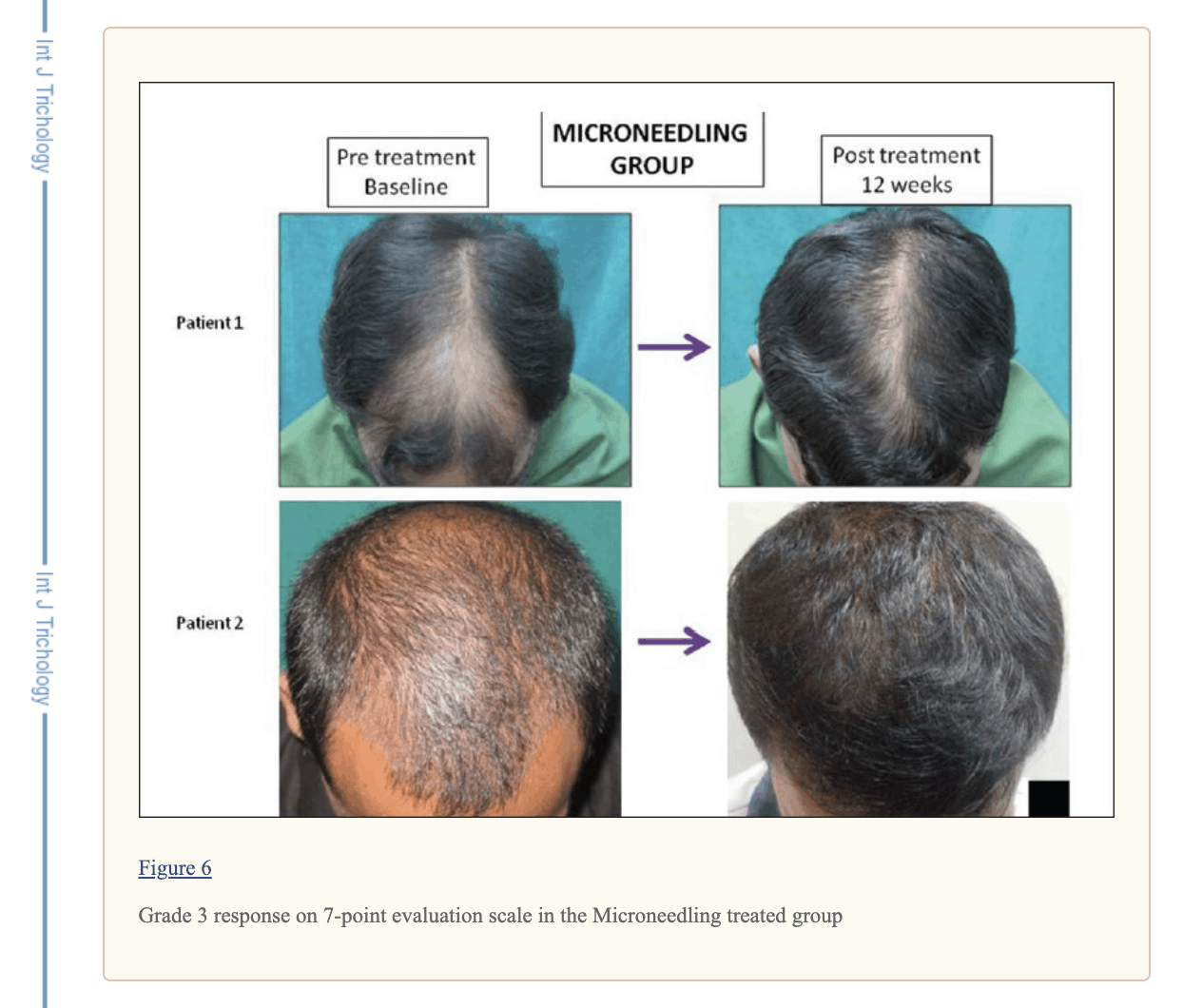
Furthermore, the microneedling group also consisted of some men who had previously used minoxidil on it’s own with unsatisfactory results but saw significant results after introducing the derma roller.
Studies do also show that using minoxidil on it’s own can certainly be effective but can take upwards of 6 months to show any significant results so the fact that these men were seeing results in just 12 weeks after implementing a derma roller is pretty astounding.
To back up this study a little bit further, here’s an informative video we came across during the research phase of putting this post together by Dr Vikram Jayaprakash and Dr Russell Knudsen from The Hair Loss Show on YouTube that explains the science behind derma rolling and stimulating hair growth on the scalp in a simple and easy to understand format.
The Effectiveness of Derma Rollers on Beards
Ok, so let’s review....
Microneedling has been proven effective for boosting collagen production in our skin and stimulating the hair growth cycle on our scalp, but can all this information be translated to our beards as well?
Theoretically, it makes sense right?
Unfortunately, there’s not a whole lot of scientific studies out there with evidence to support this but it’s clear to see how one might come to the conclusion that it could actually work...
The fact that there’s also a TONNE of anecdotal resources from several beard enthusiasts on YouTube that push the idea of derma rolling being an effective method for beard growth also makes this idea seem a little more promising.
Here’s a few YouTube videos we found during our research to support this idea from well respected YouTubers including Trav White, Dan C Bearded & Paul D'Onofrio from GroomReviews.
Trav White: How To Grow MORE Facial Hair (WITHOUT MINOXIDIL)
Dan C Bearded: Minoxidil & Dermarolling - The TRUTH!
GroomReviews: Derma Roller - Patchy Beard Growth Solution?
Other Beard Growth Factors
Upon conducting a bit more research into what makes a beard grow, this medically reviewed article from hairguard.com states that beard & pubic hair in men is primarily controlled by our hormones, specifically dihydrotestosterone (DHT).
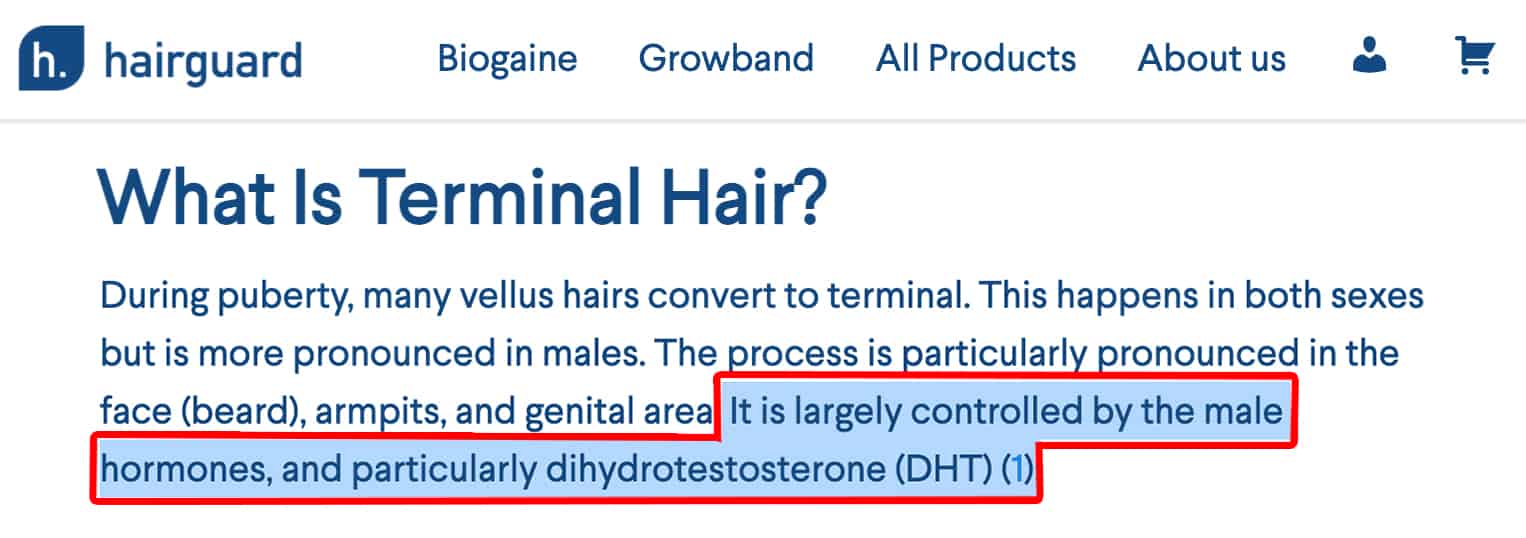
DHT is a converted byproduct of testosterone that is produced mainly in the liver when testosterone is exposed to an enzyme called 5 alpha-reductase.
DHT is responsible for the development of male sexual organs and is expedited during puberty in men which is what signals the body to start the transition of vellus hairs on our face and body into terminal hairs, resulting in the appearance of pubes, beards & other bodily hair.

What’s even more interesting is that DHT is also the hormone that scientists believe is responsible for male pattern baldness which actually starts to make this whole concept seem a little confusing.
If DHT is the underlying cause of creating 1 problem but solving another, how does a derma roller fit into this picture as an effective solution for both?
The simple answer is microneedling should only be looked at as 1 component in effectively treating both problems by stimulating the growth cycle and the other factors of both issues must be looked at individually in order to get the results we want.
We found a study that explains more on the role of DHT in male pattern baldness which you can read more about here but in order to keep things simple, let’s stick to exploring the effective components of growing a beard for now.
Which as of this point in the post, includes using a derma roller to stimulate our growth cycle and having healthy levels of DHT circulating through our bodies.
So with these 2 things in mind, it would make sense to say that using something like a derma roller to stimulate our beard growth cycle, we’d also need to have a healthy supply of DHT in our system to pull this operation off successfully…
On top of that, this medically reviewed article we found from healthline.com suggests that looking after yourself and maintaining a healthy lifestyle by doing your best to:
- Reduce stress.
- Get enough rest.
- Eat a balanced diet.
- & Take good care of your skin.
can really pay off when it comes to maximising your beard potential.
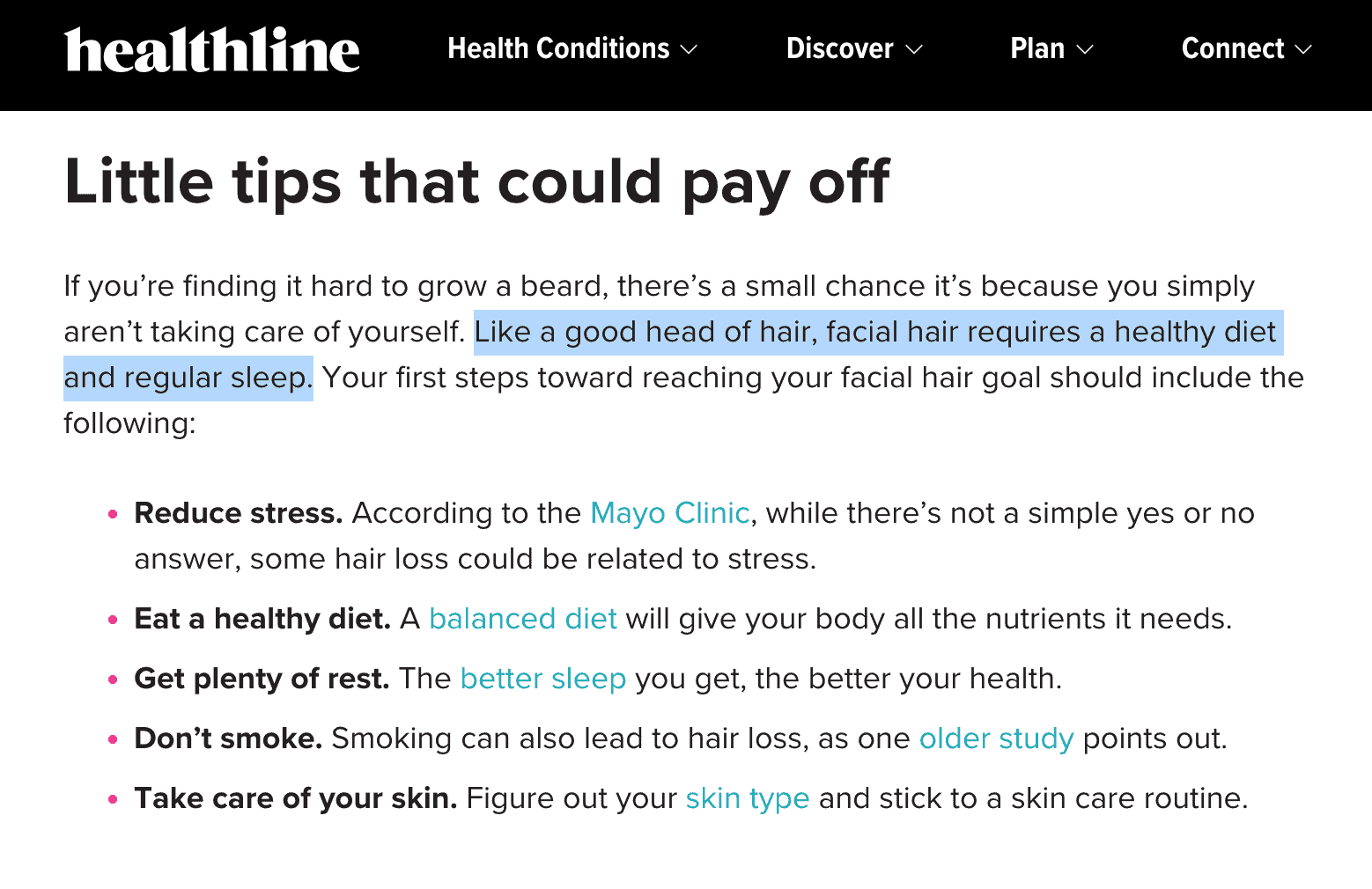
This all makes complete & utter sense if you think about it because:
- Stress creates more cortisol in our bodies and cortisol reduces testosterone.
- We get our energy and nutrients from our food which means if we want to have adequate hormone production that’s certainly gotta play a role.
- Rest helps our body make utilise the things we’re putting into it efficiently.
- Our skin is the housing unit for the hair follicle, therefore the better condition it’s in, the better the environment our hair has to grow.
The article then continues on to say that our genetics are also largely responsible for how much facial hair we can actually grow.

So simply put, if your genetic limits don’t allow for you to grow a fully fledged beard, then it’s not really viable to say that you’ll be able to achieve a beard like Greg Berzinsky...
But how do we even know what our genetic limits are?
Good question!
A great place to start would be to look at any male family relations you have and observe how much facial hair they can grow. It may help to ask them about what kind of facial hair changes they’ve experienced in their life and when those changes occurred.
Doing this will most likely give you a good indication of where your genetic trajectory is headed.
It’s also important to note that if the outlook from what you see in your male relatives doesn’t look too bright in terms of being able to grow a beard, it’s possible they themselves aren’t doing everything in their power to try and maximise their beard potential.
I.e they might not be using a derma roller or taking immaculate care of themselves, therefore their genetics limits aren’t being pushed to their potential, so the possibility for you to make some sort of beard gains might still be there.
You just won’t know until you put all of this theory into practice.
The Implications of Using A Beard Roller
Every resource we’ve read & watched during the research phase of this project expresses the importance of hygiene when it comes to using a beard roller on our skin.
Just like junkies sharing needles, it’s not cute & sharing your beard roller with others is something that you want to avoid at all costs.
Ideally you should treat it like your toothbrush and keep it clean after and before every use because although the needles are small, they’re literally penetrating the surface of your skin and if you’re not sterilizing your beard roller properly, you’ll risk things like infection and other undesirable implications by not doing so.
The best practices recommended for keeping your beard roller sterile are soaking it in isopropyl alcohol for 60 to 90 seconds before use and then again for 3-5 minutes after use to kill any remaining bacteria that might build up on needles.
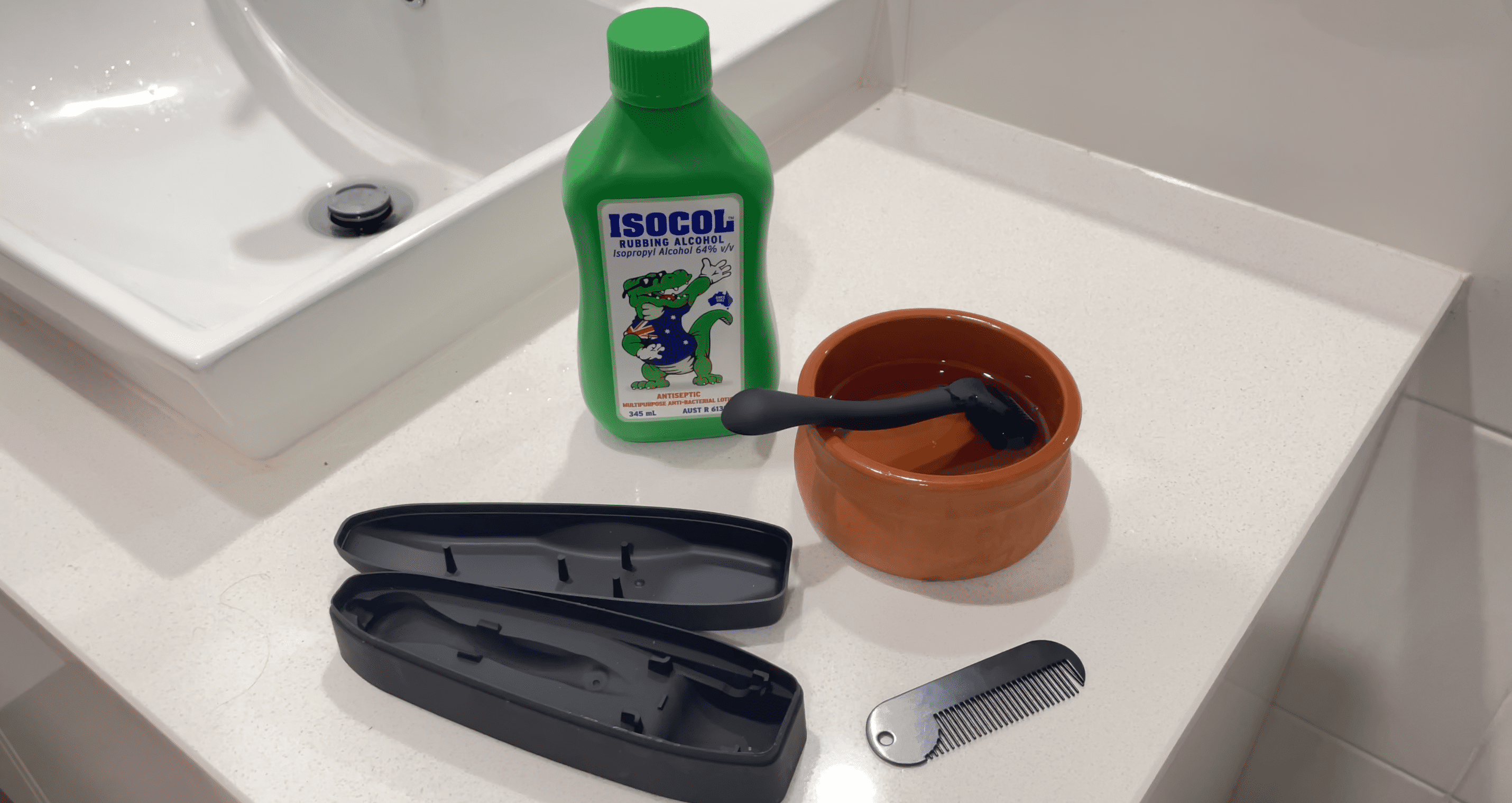
It’s also recommended you store your beard roller in a clean case to ensure it stays clean between uses.
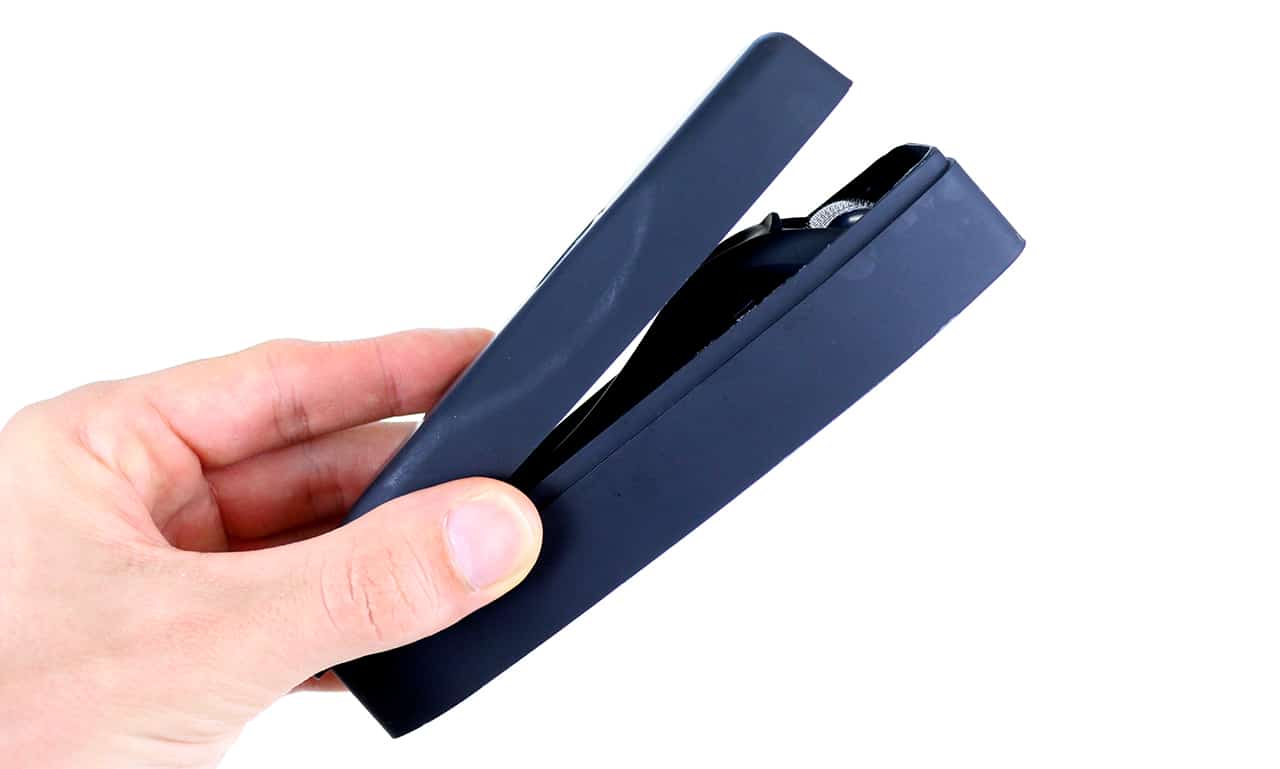
Other implications to keep in mind with using a beard is ensuring you use the right length needles.
The longer the needles the more intense the injury sites become & although the method of microneedling involves causing damage to the skin in order to activate the natural healing process, too much damage can lead to over stimulation and actually cause hair to fall out prematurely.
Dr Russell Knudsen from The Hair Loss Show on YouTube touches on this in the video we cited earlier in this post.
He also states that in order to activate the hair growth cycle, we want to ensure the needles are just long enough to penetrate to the bulge area of the hair. In the scalp, the bulge area sits roughly about 1.5mm below the surface of the skin so it’s more suitable to use a 1.5mm derma roller when treating the scalp.
However, because the skin on our face is far thinner than the skin on our scalp, using a 0.25mm - 0.5mm derma roller on your beard is more suitable.
How To Use A Beard Roller At Home
When it comes to actually administering the treatment, you’ll want to do multiple passes over each patchy area for maximum effectiveness.
It’s recommended that you do 10 - 20 rolls in each target area in 3 different directions. Horizontally, vertically & diagonally.
Here’s a quick video from Thomas to explain:
Beard Rolling In Review
So now we’ve done our diligence and taken a good hard look at all the supporting scientific and anecdotal resources available to support that using a beard roller might be an effective solution, let’s summarise what we’ve learnt.
- Beard rolling is modality also known as microneedling/collagen induction therapy that has been scientifically proven to induce new collagen production in the skin and stimulating hair growth hair growth factors by creating multiple superficial injury sites that activate the skin’s natural healing process.
- Although microneedling has been proven to stimulate the hair growth cycle, there is no scientific studies to support that using microneedling to expedite beard growth but there are multiple anecdotal resources from influencers backing the idea.
- Beard rollers have also become a popular cosmetic retail item indicating there’s a market for this and it would seem dumb for business owners to invest in an idea and product that doesn’t get results and expect it to be a sustainable business model which suggests their products must work to some degree.
- Beard rolling should only be looked at as 1 component that MAY contribute to growing a thicker, fuller beard and should NOT be looked at as a 1 stop shop solution.
- Other factors that play a role in growing a healthy beard include our genetics, hormone production and taking good care of yourself to ensure your body has all the things it needs for growing strong healthy hair.
- Adequate hygiene when undertaking this kind of therapy is paramount and you should never share your beard roller & keep it clean before and after every use by soaking it in isopropyl alcohol.
- The recommended needle length for your beard rollers should be between 0.25mm - 0.5mm for best results.
- Recommended usage of your beard roller is 2 - 3 times per week to ensure the skin has adequate time to heal in between treatments.
- 10 - 20 passes over the target areas in a vertical, horizontal & diagonal direction is recommended for best results.
- The hair growth game is a marathon not a sprint so expect to wait upwards of six months to see significant results so patience is key.
Wow, that’s a lot of information to take in right? After reviewing all of the above, it’s clear to us that a beard roller is certainly worth consideration if you’re serious about growing more facial hair.
Obviously, the other factors we’ve covered in the post also play a large role in making this whole pulley system work so if you’re going to give beard rolling a go, you should also think about how you’re going to accommodate those other factors in your lifestyle before pressing the play button just like Thomas In Action did in his introductory video at the top of this post.
And that brings us to the end of the post for now.
Make sure you bookmark this post for later as we’ll be sharing Thomas’ 3 month update which at this point in time is due in December!
You can also subscribe to Thomas’ YouTube channel to stay up to date with his beard roller experience by clicking the subscribe button below.
We hope you enjoyed this post for now and we look forward to seeing you in 3 months!
Beard Roller Results: 3 Months Later
References
Scientific Studies:
A Randomized Evaluator Blinded Study of Effect of Microneedling in Androgenetic Alopecia
Minoxidil and its use in hair disorders
Review of Applications of Microneedling in Dermatology
Relationship Between Circulating Cortisol and Testosterone: Influence of Physical Exercise
Medically Reviewed Articles:
Vellus Hair to Terminal Hair – Hair Growth Cycle Guide
Useful YouTube Videos:
How To Grow MORE Facial Hair (WITHOUT MINOXIDIL) - Trav White
The Hair Loss Show - Derma-rolling / Micro-needling

